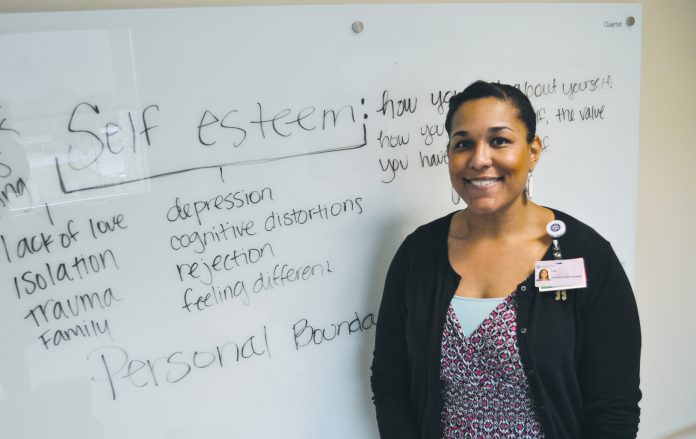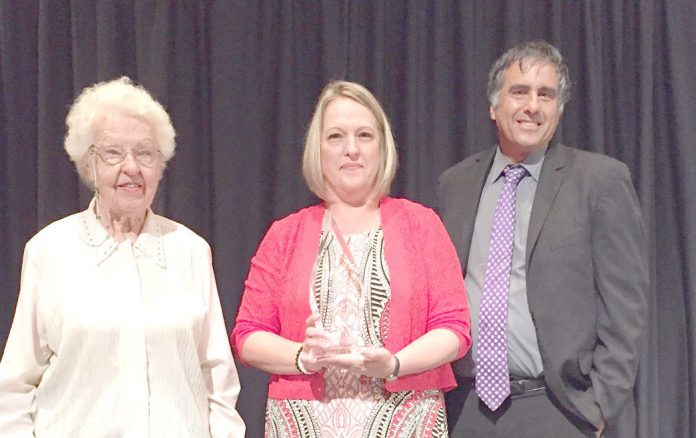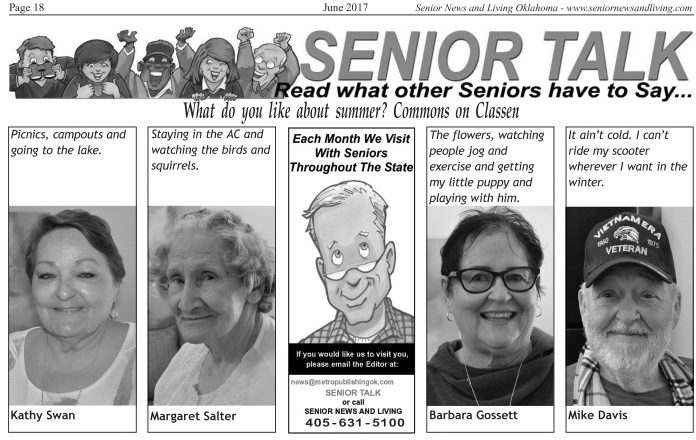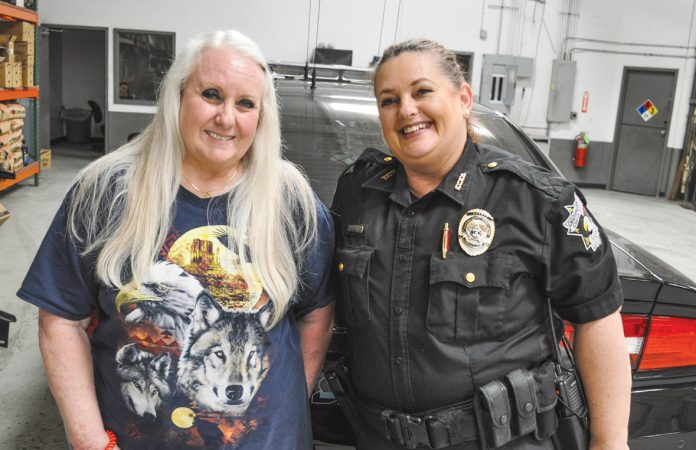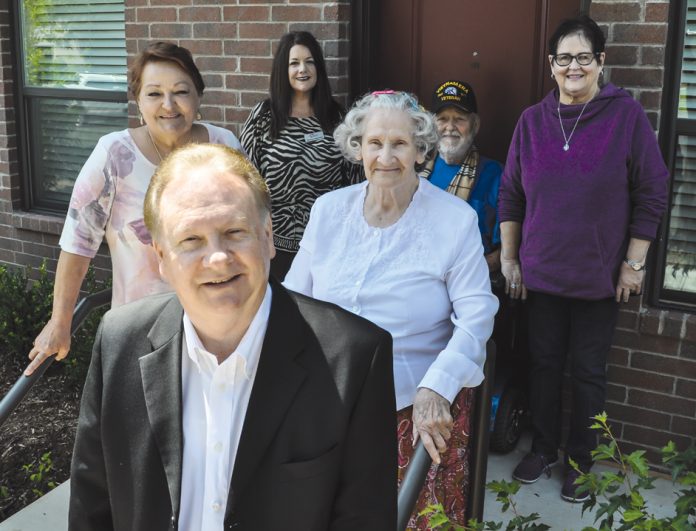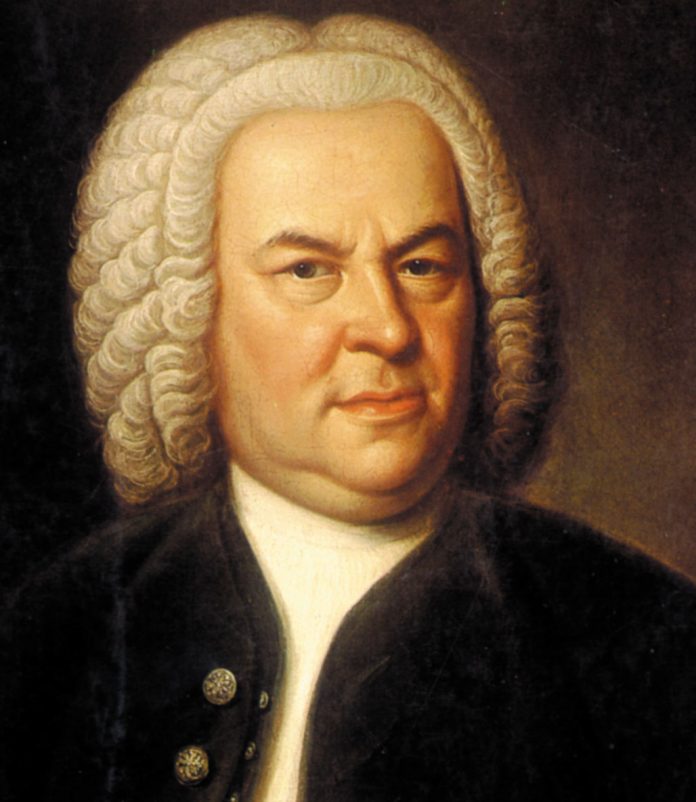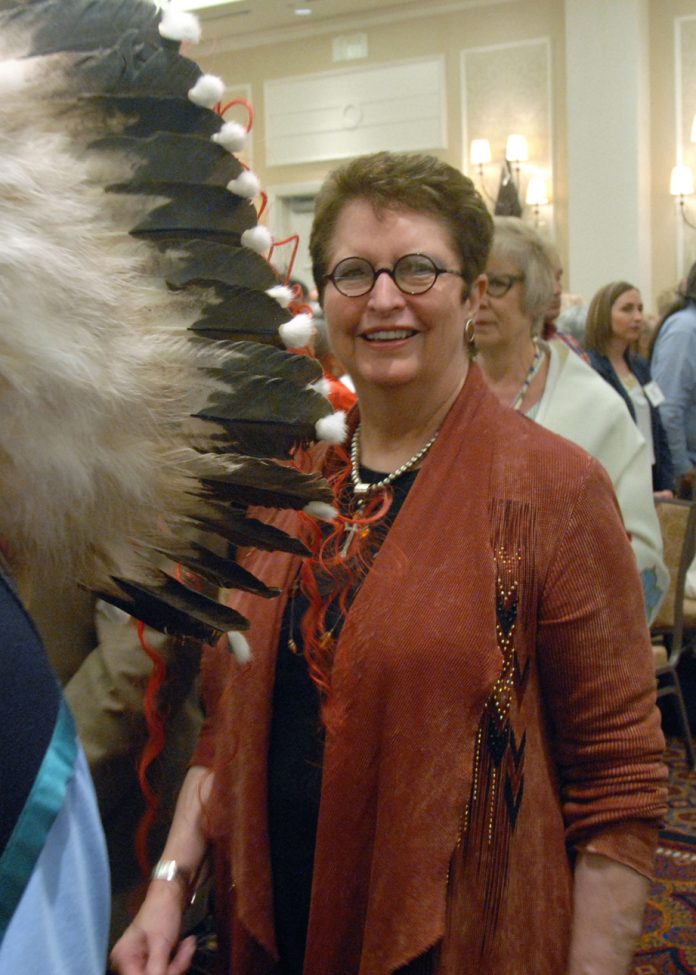by Bobby Anderson,
Staff Writer
As a licensed clinical social worker, Liz Shumate understands sadness and depression are not a normal part of aging.
But for thousands of Oklahoma seniors, happiness is something they believe is long gone.
“Happiness is obtainable,” said Shumate, program manager at Norman Regional Senior Counseling Center. “Even though you’re an older adult that doesn’t mean that your older years need to be unhappy. There’s ample opportunities to help people be the best version of themselves and make changes and find new happiness.”
Throughout the week at Norman Regional Moore, 700 S. Telephone Rd, you’ll see seniors working on finding that happiness once again.
There’s smiles, tears, coffee, conversation and even lunch.
Shumate says the later years of life should be a time of enjoyment and continued positive, intellectual and emotional growth.
Senior adults experience a variety of unique and difficult life changes that can be overwhelming at times. For some, these challenges include declining physical or mental capabilities, the loss of independence and the loss of loved ones. These changes may cause confusion, depression, anxiety and withdrawal.
Many who lived through the Great Depression and war years often try to overcome their emotional obstacles on their own. Often unrecognized for a treatable condition, depression and feelings of sadness are allowed to remain untreated for years, allowing senior’s mental and physical health to spiral downward.
Counseling is also something unique to many older Americans.
“I think sometimes older adults are often overlooked,” Shumate said. “But they just seem to be very appreciative of the consistency of a caring person helping them get to where they want to be.”
Many of Shumate’s patients live alone. Isolation can be the worst thing possible for those struggling.
“The great thing about our service is the primary service we offer is group therapy,” Shumate said. “That’s an opportunity for people to not only interact with a therapist but to get that peer support. Often times they’re able to realize ‘I’m not the only one or other people have problems, too.’ When you’re isolated you tend to focus on what you don’t have and what you can’t do. Often smaller problems will exacerbate into bigger issues and they are something we can help you work on if you’re open to meeting new people and participating in the process.”
Transportation is provided within a 35-mile radius and vehicles are equipped with wheelchair lifts. Program services are offered during the day which allows patients to return to their homes in the afternoon.
Norman Regional Senior Counseling Center provides three group therapy sessions that incorporate fun and friendliness while discussing life’s victories and challenges.
A relaxed, comfortable environment is provided where patients are encouraged to participate in groups and is designed to promote achievement of individualized treatment goals.
Participants are served a lunch and provided snack breaks between sessions. Inspiration provides bathroom assistance to meet each patient’s individual needs. Services are approved and monitored by a physician.
Farhan Jawed, MD, is the medical director of the counseling program.
“Norman Regional Senior Counseling Center provides stability for a vulnerable population,” Jawed said. “Our services create routine and structure as we support the patient’s overall well-being. We collaborate with family to provide education about their loved one’s psychiatric disorder to support successful treatment outcomes.”
Shumate said each day often begins with patient arriving and greeting one another over coffee.
Relevant group therapy curriculum is always planned but Shumate says the beginning moments where patients are encouraged to share victories and setbacks often will steer the conversation.
There are breaks and then lunch is served.
Shumate knows the lunch hour is often a time when seniors are able to begin processing their morning.
“Often times you’ll hear people say ‘I never thought about that. This is motivation for me to try new things,’” Shumate said. “A lot of our folks who have been isolated or depressed we don’t just say ‘call this number.’
“You’ll hear a lot of encouragement in the dining room – peer support – and then they go home on the bus and that’s more socialization time.”
Signs you or a loved one could use help:
*Sadness/Depression
*Irritability or agitation
*Loss of interest in activities
*Feelings of suspicion and mistrust
*Excessive worry and anxiety
*Tearfulness or crying spells
Norman Regional Senior Counseling Center offers two schedule options for participants. The morning program runs from 9 a.m. to noon and the afternoon program is offered from 11:45 a.m. to 2:45 p.m. with transportation offered.
If you or someone you know could benefit from this program simply call (405) 912-3495. A screening will be provided at your convenience in the comfort of your home. Medicare is accepted.


